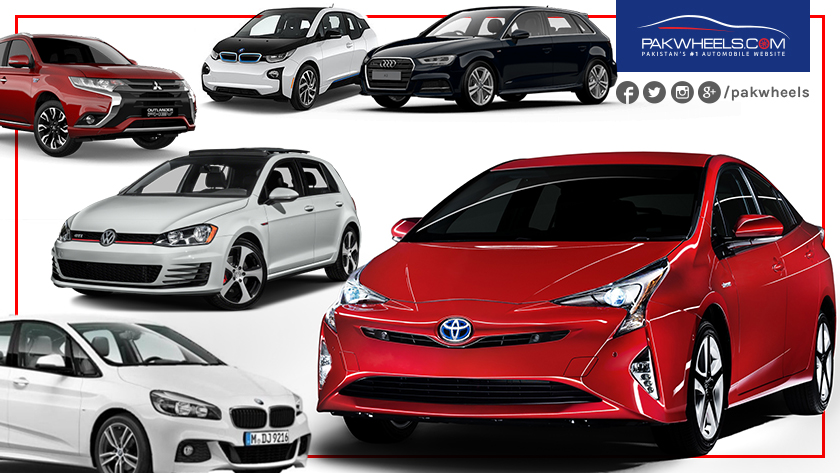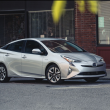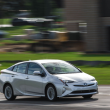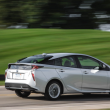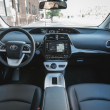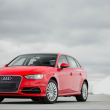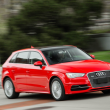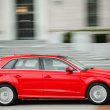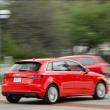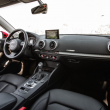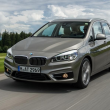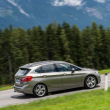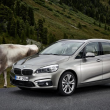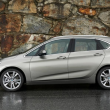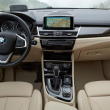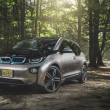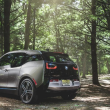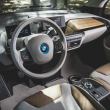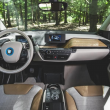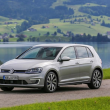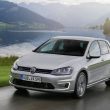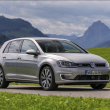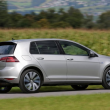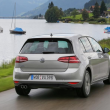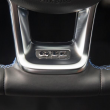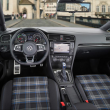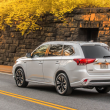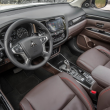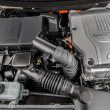The Toyota Prius is, in many ways an automotive home run, an efficiency masterpiece and until very recently, a category of one. However in Pursuit of ZEV (Zero Emission Vehicle) credits, carmakers have started to make efficiency the heart and soul of their design, fuel economy and lowering emissions has become the core prospect of carmakers in the last couple of years. Starting with model year 2015, I believe, automotive manufacturers have started making luxurious, powerful, and efficient Plug-in Hybrids models of their more conventional Gas-Engine creations. Due to increasing emission restrictions and government regulations in countries across the globe.
Allow me to begin with elaborating on what a Plug-in Hybrids is; essentially, it is a middle-ground between a full battery electric vehicle, and a conventional hybrid. Unlike a hybrid (let’s take the Prius here as an example), which charges its battery via regenerative braking (using the motor to charge the battery when you’re braking or coasting) it may only go on EV-only mode (without using the engine and hence any fuel) for a Kilometer or two, a PHEV (Plug-in Hybrid Electric Vehicle) has a much bigger battery, that can almost never by charged fully by regeneration (the conventional Prius has a battery capacity of 1.3 kWh, the Prius Plug-in has as an almost four-fold increase to 4.4 kWh), instead you charge the battery by Plug-ing it into an electrical outlet. This allows them to run in a state that is closer to full EVs than Hybrids; for around 35-50km an average PHEV can run on battery power alone. This gives them an edge in efficiency over hybrids, as I discussed in my previous video, EVs are, almost unbelievably, more efficient than Gas-engines and it also gives them zero tailpipe emissions for that duration. When the battery is discharged after the battery-only range is depleted, the driver is not faced with range anxiety, unlike in an EV. Instead the engine fires up and the car functions as a regular hybrid! Enabling much, much longer trips. What’s not to love!
Alright, that is enough technical gibberish for one article! Let us commence with the meat and potatoes of this writing, the best PHEVs right now on the market that any (sane) buyer that intends to buy a Prius should at the very least consider.
But first let’s start with the crowned prince of efficiency who is about to be dethroned;
2016-2017 Toyota Prius
Price: 28-45 Lacs
Power: 121 HP
Weight: 1390 Kg
0-100: 10.5s
EV Range ~ 2 Km
Fuel Economy: 20-25 km/l
The Toyota Prius has long been the harbinger of hybrid cars, and for a good reason. It delivers on its promise of astounding fuel efficiency for a car without a plug. However the scene is changing fast, and Toyota needs an encore immediately in the form of the Toyota Mirai FCV (Fuel Cell Vehicle), but that’s a topic for another day. The Prius was intended from the ground-up as a fuel sipper and not a roadster, the responses are laggardly, the brakes feel wooden, and there is no response from the steering, which is perfectly all right for a car whose mission was to be economical. However the competition has heated up considerably, and PHEVs from the likes of Audi and BMW offer great driving dynamics and luxury, alongside stellar economy and since the Prius comes dangerously close to and even intersects, on some trim levels, with their price point (Due to the higher import duty, The Prius is a 1.8L Hybrid, where offerings from BMW and Audi have engines under 1.5L) it is hard to recommend any more. Make no mistake I absolutely adore the Prius for starting the alternative powertrain revolution and ongoing march to electrification, however even with that being said, at this point in time, the bland cabin with brittle plastics, high price, now-unremarkable fuel economy, dull driving dynamics and the crop of new PHEVs make the Prius hard to recommend.
2015-2016 Audi A3 Sportback e-Tron
Price: 28-40 Lacs
Power: 204 HP
Torque: 385 Nm
Weight: 1495 Kg
0-100: 6.5s
EV Range ~ 45 Km
Fuel Economy (Electric Only): 2.3 Rupees/Km or 32.6 Km/l-equivalent
Fuel Economy Combined: 20 Km/l
The A3 e-Tron is, undoubtedly, one of the most interesting PHEVs out there. With a 1.4 TFSI, Turbocharged and Direct-Injected engine producing 150HP and 250Nm paired to an electric motor contributing another 102HP and 330Nm to the massive 204HP system and monstrous 385Nm of Torque; all this going through a delightful 6-Speed Dual-Clutch Automated Manual Transmission that is leaps and bounds ahead of any CVT or Automatic in a hybrid, to the front wheels allows this 1.5 ton beast to race to a 100 km/h in a mere 6.5 seconds. 17-inch alloys and all of the modern safety and driver assistance features like Adaptive Cruise Control, Automatic Emergency Braking, Lane Departure Prevention and Blind-spot monitoring are available. The cabin delights with build quality you’d expect from an Audi and the MMI Connect infotainment system with integrated 4G LTE and beautiful Google Earth Navigation. The Audi Connect mobile app allows the user to set the climate control, find the car, send a destination to the navigation system and check the battery level and available rang all from a smartphone. A two-hour charge from a 240V outlet gives the around 40km of EV range. The A3 is a reliable car with not a lot of maintenance cost, however (unlike BMW) it lacks any aftersales warranty, like most imports, so that may turn off some buyers. A Japanese import of the model year 2015 with 15000Km on the odometer and Auction Grade ‘5’ can be had under 35 Lacs. Certainly not cheap, but a great value nonetheless.
2015-2016 BMW 2 Series Active Tourer 225xe
Price: 30-42 Lacs
Power: 221 HP
Torque: 390 Nm
Weight: 1795 Kg
0-100: 6.7s
EV Range ~ 40 Km
Fuel Economy (Electric Only): 2.16 Rupees/Km or 34.7 Km/l-equivalent
Fuel Economy Combined: 22 Km/l
In a class where there is an Audi, there’s bound to be a similar BMW; and in this class exists the 225xe, the A3 e-Tron’s main rival. A 1.5L BMW TwinPowerTurbo, a Turbocharged, and Direct-Injected Engine beats at its heart, generating 134HP and 225Nm of Torque driving the front wheels. However here is where it gets interesting: Placed at the rear-axle, to an electronically controlled rear-differential, is the electric motor adding 87HP and 165Nm, giving the car a total of 221HP and 390Nm, more importantly giving it Torque-Vectoring All-Wheel Drive!; Which is a type of All-Wheel Drive which can bias the power to the front or the rear wheels depending on the scenario. For example, it may bias the power to the front when the rear is struggling for traction when stuck in the mud for instance, or bias it to the rear for better handling and cornering ability. This sophisticated AWD is a major selling point for the vehicle. The cabin is laden with tech thanks to BMW’s legendary iDrive infotainment system, and has a stellar material and build quality, and the design language is better than that of Audi’s. Moreover, it too has the BMW Connected Mobile app for the same basic functions. It even includes a Head-up display! All of the modern safety features and driver assistance features like Adaptive Cruise Control, Automatic Emergency Braking, Lane Departure Prevention and Blind-spot monitoring are in abundance. The 6-Speed Torque Converter Automatic is silky smooth, though not as good as the DCT in the A3. Not all is great though, when the car in pure EV mode, the AWD is, understandably, unavailable. The weight at almost 1.8 tons makes the car not handle as well as an A3, also the A3 has a lot more power and torque in pure EV mode and is a better driving experience thanks to lower weight and similar power. The 2-Series also has something called “BMW Repair Inclusive,” which is an extended warranty program that covers any major fault in the car and is even valid in Pakistan.
2016-2017 BMW i3 REx
Price: 27-35 Lacs
Power: 170 HP
Torque: 250 Nm
Weight: 1195 Kg
0-100: 6.5s
EV Range ~ 200 Km
Fuel Economy (Electric Only): 0.93 Rupees/Km or 75.6 Km/l-equivalent
Fuel Economy Combined: 42 Km/l
Understandably, many of you may be scratching your heads as to why the i3, an EV is in this list of PHEVs. You are correct the i3 is an EV however it is also offered as a Range Extender Plug-in Hybrid, a class of PHEVs in which the engine acts as a petrol generator for the battery and never drives the wheels. The range extender in the i3 is a 650cc Two-Cylinder miser of a motorcycle engine; generating just 39 HP, laughable right? Wrong. This engine never drives the wheels. Instead, it just charges the battery, and the 170HP motor does all the heavy lifting, which means performance is unadulterated with the REx, if you want to learn more about the i3, I detailed it alongside some other potent EVs in my previous article. But it’s a fun driving, great handling, and amazingly efficient car! Just look at its fuel economy numbers and compare them to other EVs and PHEVs!
2015-2016 Volkswagen Golf GTE
Price: 26-33 Lacs
Power: 204 HP
Torque: 385 Nm
Weight: 1580 Kg
0-100: 6.8s
EV Range ~ 50 Km
Fuel Economy (Electric Only): 2.08 Rupees/Km or 35.9 Km/l-equivalent
Fuel Economy Combined: 21 Km/l
As many of you may be aware that the A3 is based on the VW Golf Platform; the A3 e-Tron and VW Golf GTE share the same platform! Though they do share the same DNA under the skin, the two are quite distinct vehicles otherwise. The Golf GTE has most of the Audi driving dynamics and ride but has a little less noise insulation and the responses are not as sharp, granted they are still more than adequate. The 6-Speed DCT is carried over from the A3 and performs admirably delivering smooth, sharp, well-timed and crisp feeling shifts. The Golf GTE handles well and feels agile in spite of picking up a few pounds over the A3. The interior is also appreciably different; most GTE models have very comfortable quilted cloth seats with contrasting blue stitching, however, the VW ThinkBlue infotainment rig lacks LTE and Google Services but has MirrorLink for enhanced smartphone pairing. 17-inch wheels are standard along with the usual bucket of driver’s aids including Adaptive Cruise Control, Automatic Emergency Braking, Lane Departure Prevention and Blind-spot monitoring. Like the A3 it takes around 2 hours to charge fully on a 240V outlet. A 2015 Grade ‘5’ with around 10k km on the clock, will cost around 30 Lacs to import. And is a much, much better buy than a Pakistani Assembled 1.5 Turbo Civic.
2013-2015 Mitsubishi Outlander PHEV
Price: 40-55 Lacs
Power: 203 HP
Torque: Unstated
Weight: 1810 Kg
0-100: 11.0s
EV Range ~ 50 Km
Fuel Economy (Electric Only): 2.88 Rupees/Km or 26.0 Km/l-equivalent
Fuel Economy Combined: 16 Km/l
What would this list be without an SUV! We seem to have an unending love for SUVs and crossovers, just look at how people are willing to pay 10 lacs over a Prius for a Honda Vezel. Anyways, the Outlander is the only SUV on this list. A 2.0L engine and two electric motors give the Outlander AWD, even when in EV mode. The fuel economy of 26 km/l-e may not be impressive, until you take in into account the sheer mass of the Outlander, think of it; An SUV with the size and power output of the Land Cruiser Prado trades blows with the Prius in terms of fuel economy! Being built by Mitsubishi the Outlander is built like a tank, and is rock solid. I have a high regard for the Automaker’s long term history of reliability and the Outlander is no exception. Something the Outlander does not offer is thrills. The interior design is good but the cabin tech is behind German rivals and the 11 second 0-100 time, falls squarely into the category of ‘slow’, it may feel agile to drive thanks to instant electric torque but the portliness of the thing at 1.8 tons and its sheer mass gives a flaccid driving feel, but that’s not what SUVs are about anyway. A Grade ‘5’, model year 2014 Outlander, driven around 20000Km will cost around 45 Lacs, due the large 2.0 liter engine; not affordable but not unattainable either.
I would like to end on a side note about the future of automobiles; and the ongoing trend towards increased electrification of cars that is not likely to go away anytime soon. Even in Pakistan recent developments point in that direction, Dewan Motors installed 6 EV chargers in just the last year. A few short weeks ago BMW’s 5 Series 530e was put on display in Packages Mall, Lahore for over 10 days in L’Oreal’s fashion week. This march towards increased electrification is undoubtedly going to start a new chapter in automotive history; even though this is an industry known for its inertia, the only thing keeping the EV revolution at bay, is a major breakthrough in battery technology and advancements in the technology of the Internal combustion engine, in my upcoming articles I will cover some of these technologies and discuss the future and current prospects of the much touted Hydrogen Fuel Cell Vehicles (FCVs) and how they will battle it out with Battery Electric Vehicles (BEVs) for the powertrain of the future.

